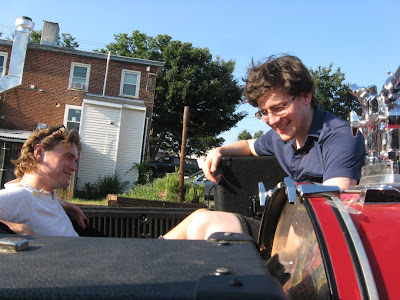On Friday Will Rieley and I returned to Salubria, my site for the Garden Club fellowship, to do some surveying around the house. The mansion dates from the mid-18th century, when this area was still the frontier of colonial Virginia. Salubria was built for the Reverend John Thompson, a wealthy planter who owned over 30 slaves and about 7,000 acres of land. His first wife was also very wealthy, since she was the widow of former governor and proto-industrialist Alexander Spotswood. Salubria was a plantation, although no outbuildings or slave quarters remain. It is still surrounded by farms as well as some suburban development outward from Culpeper.
The boxwood oval in these photos was designed and planted in the 1950s by Alden Hopkins, who was then the resident landscape architect at Colonial Williamsburg. Beyond the oval are the falling gardens, three flat terraces and two slopes that are now grown up in (and obscured by) trees. These terraced or "falling" gardens were very popular in the mid-Atlantic colonies and were a sign of wealth and status. Some terraces were planted with vegetables and flowers, some were planted only with turf. On the Chesapeake Bay, the James, and other rivers, the terraces stepped down to the water, creating a dramatic entry for visitors arriving by boat. I am planning to look at this garden type in this region and time in order to learn more about how it developed, technologies used to create them, how they were used and planted, and how they varied depending on site.















